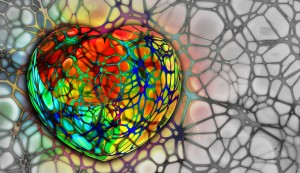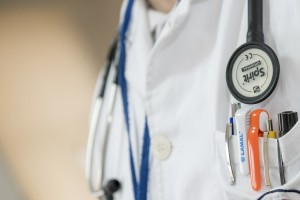Hypertension is another word for high blood pressure. According to the Merriam Webster dictionary, hypertension is “abnormally high blood pressure and especially arterial blood  pressure.”
pressure.”
High blood pressure occurs when the arteriole arteries narrow, making it difficult for blood to pass through them. This forces the heart to pump harder to get the blood through. As the pressure increases above normal and is sustained, the result is high blood pressure.
High blood pressure is a common problem. It is the most common chronic illness in the United States. Almost twenty five percent of Americans have it, and a significant number of them do not realize they have it. That is because high blood pressure causes few, if any symptoms, until it has reached an advanced stage. This makes it important to have your blood pressure checked regularly.
What Is Hypertension?
High blood pressure is a very dangerous disease to have and leave untreated. High blood pressure significantly increases a person’s risk for stroke, heart failure, heart attack, kidney disease, vision impairment, dementia, and premature death. Left untreated, high blood pressure can shorten a person’s life by up to twenty years. Despite these alarming facts, a little over fifteen percent of the people in the United States who have high blood pressure and know they have it do nothing to control it.
There is no cure for high blood pressure but it is very treatable and is also preventable. Lifestyle changes, along with medication if needed, can keep blood pressure at a safe level.
There have been substantial advances in knowledge about and treatment of high blood pressure in the past several decades. Increased awareness and medical advancements in regards to high blood pressure have helped decrease the number of deaths from strokes by seventy percent and the number of deaths from heart disease by more than fifty percent according to data from the Mayo Clinic.
The risk of developing high blood pressure increases as a person ages. Race is also a determining risk factor. Black Americans have the highest risk of developing high blood pressure—about thirty-three percent of black Americans have it. Approximately twenty-three percent of white Americans have high blood pressure, making them the next highest risk group. Twenty-one percent of American Indians have high blood pressure. Eighteen percent of the American Hispanic population has high blood pressure and sixteen percent of Americans of either Asian or Pacific Islander descent have high blood pressure according to information from the Mayo Clinic.
Family history is a risk factor as well. If high blood pressure runs in a person’s family they have a higher risk of developing it. Gender is another factor. Up to age fifty-five, men are more likely to develop high blood pressure. After the age of fifty-five, women have a higher risk of developing high blood pressure.
Other factors that increase a person’s chance of developing high blood pressure include: being overweight, having a sedentary lifestyle, smoking or chewing tobacco, excessive alcohol consumption, and low potassium levels.
Some illnesses raise a person’s risk of developing high blood pressure. If a person has heart disease, diabetes, high cholesterol or sleep apnea they have a greater risk of developing high blood pressure.
There are two different forms of high blood pressure, essential high blood pressure and secondary high blood pressure. Essential high blood pressure is the most common form of high blood pressure. It is also known as primary high blood pressure. It does not have any obvious causes.
Secondary high blood pressure is when the cause of the high blood pressure can be attributed to another disease. Only five to ten percent of high blood pressure cases are secondary. Some of the diseases and disorders that cause secondary high blood pressure are kidney disease, renal artery obstruction, hyperthyroidism, hypothyroidism, hormonal abnormalities, and preeclampsia.
It is common for people with untreated high blood pressure to have plaque accumulate in the major arteries of the heart. The plaque deposits reduce blood flow to the heart and can eventually cause a heart attack. High blood pressure narrows the arteries and blood vessels in the body. Getting oxygen rich blood to the heart becomes more difficult as the arteries get narrower. If the heart cannot get enough oxygen, it will cause a heart attack.
 the needs of the engine in your car. These needs are Fuel, Air, and Spark. By the way, you must have realized by now that I am a very simple minded person with a very simple mind. To simplify, this article I will address just one of these needs. Fuel.
the needs of the engine in your car. These needs are Fuel, Air, and Spark. By the way, you must have realized by now that I am a very simple minded person with a very simple mind. To simplify, this article I will address just one of these needs. Fuel.